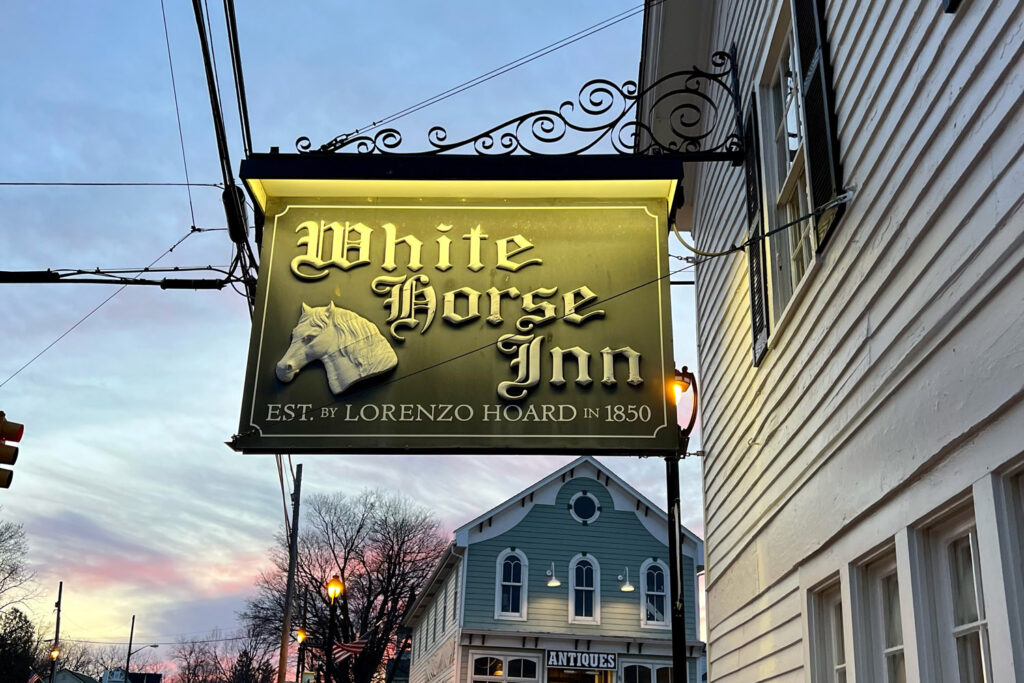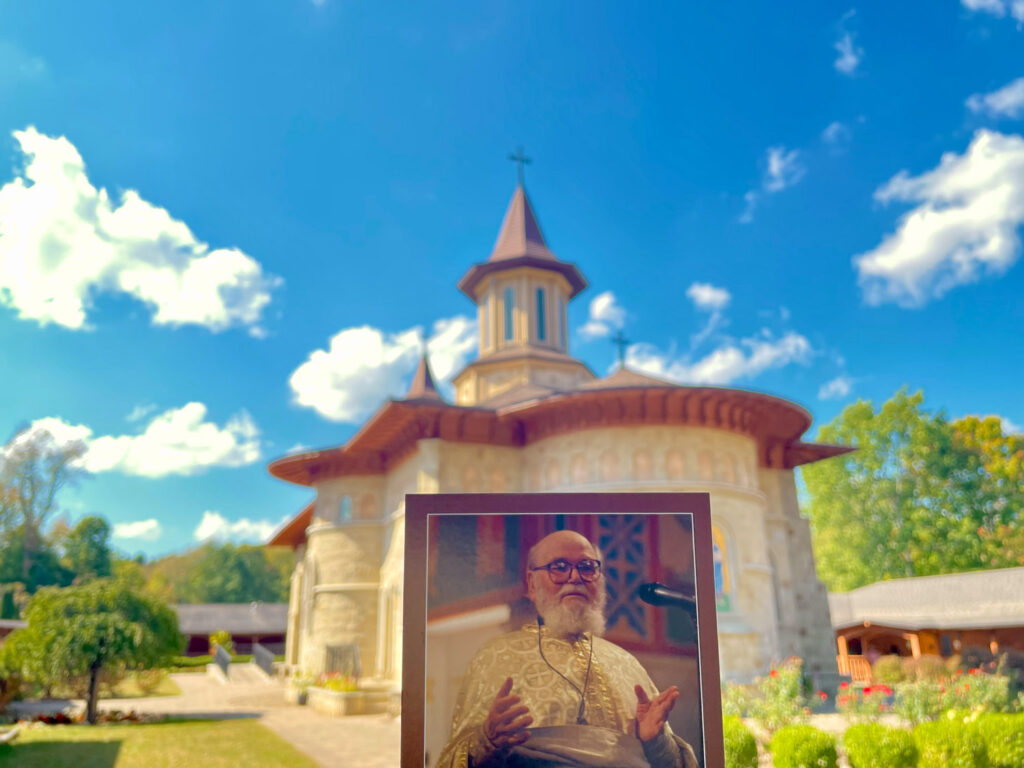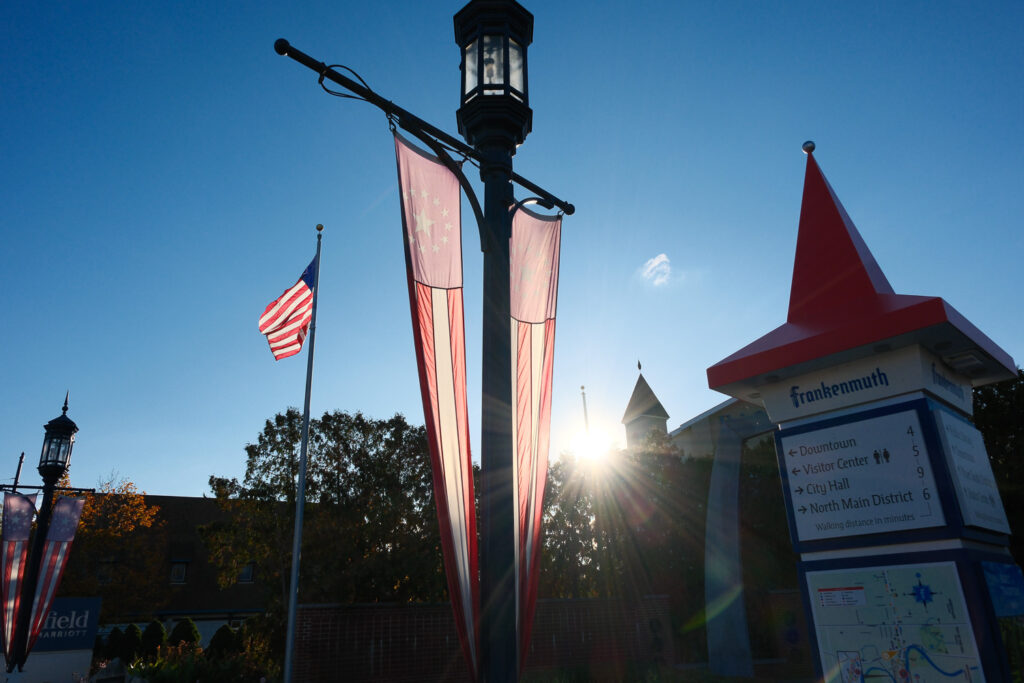Metamora — The road to Metamora is smooth now. If you take I-75 North from downtown Detroit and exit at Lapeer, you can cruise your way toward horse country in about an hour.
The same journey in 1830 would have taken several days, and under no circumstances would it have been smooth. For early 19th-century travelers in Michigan, getting from point of origin to destination was a trial.
Stagecoaches served passengers across the state, and Metamora was a stagecoach stop. The stages took passengers between Thornville, Pontiac, and eventually to Flint.
With the addition of the railway in 1850, travelers could go longer distances without using the rough roads stagecoaches were obliged to travel on.
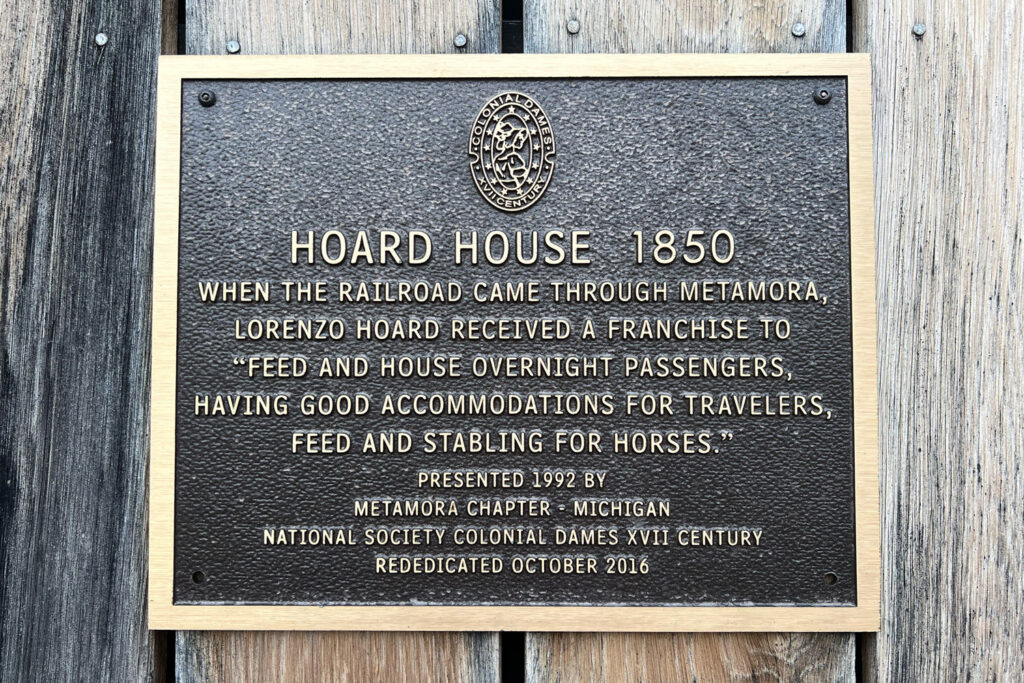
At the heart of downtown Metamora is a general store-turned-inn that operated continuously for 162 years before closing in 2012. Its current owners, and much of the town of 600 souls, spent two years restoring it before it reopened in 2014.
The confluence of coaches, inns, and merchants established the first villages on the Michigan frontier. Metamora became a town because of its natural resources and agricultural potential.
Shortly after Lapeer was established by a farmer from Connecticut in 1833, Metamora grew from Eber Barrow’s log way station, known as Barrow’s Corners, to a larger settlement in the late 1830s, but it was the opening of the Territorial Road in 1848 that put it on the map.
Travelers heading north needed accommodation, and they could find it here, along with food and drink to refresh themselves after and arduous day on the road.
Metamora became famous for lodging and hospitality, spurred by the new travel technology of the railroad. Agricultural products and people were shipped across the state and country on tracks. By the 1920s, horse breeders and the establishment of the Metamora Hunt began building the reputation of the town and surrounding areas as horse country for which it remains famous.
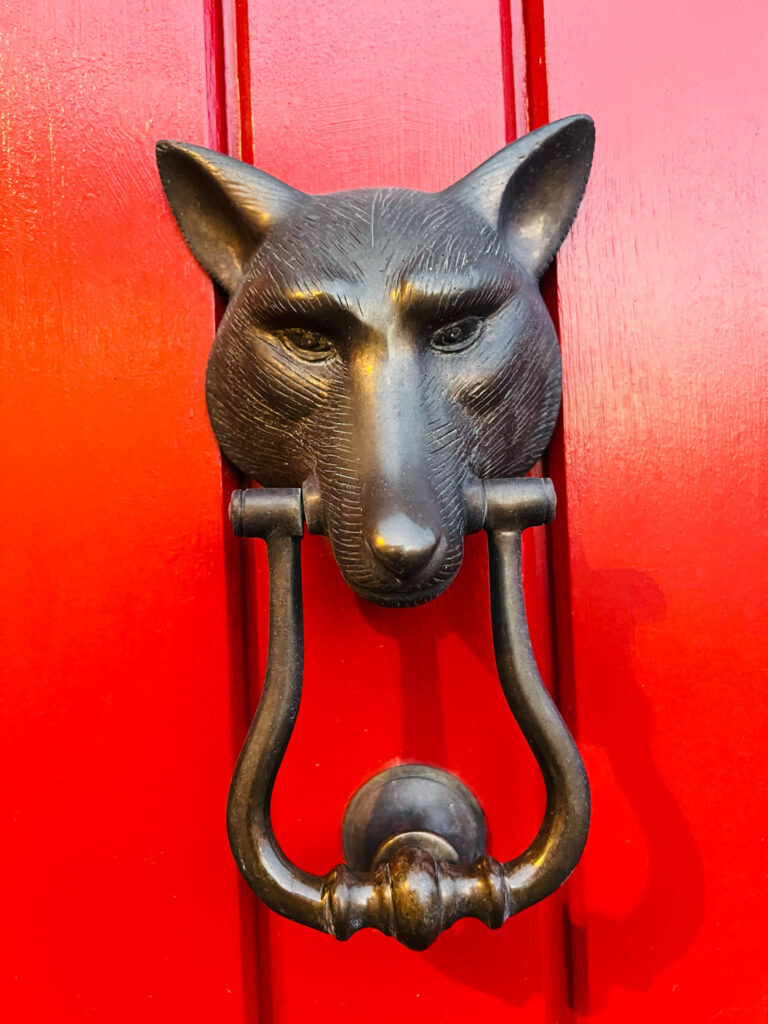
The White Horse Inn is a white building with a red door and natty brass fox door knocker. Walking into the main taproom, you are greeted by the glowing warmth of timber, light and fire. The beams, floors, and the stone fireplace with built-in wood boxes echo the layout of an English inn from the 1820s.
Metamora took about a decade to grow into a village. A blacksmith, a miller, a general store, and farms had set up shop in town by 1848, but a more sophisticated social layer of commerce was established when Lorenzo Hoard was granted a franchise from the newly established railway to “feed and house overnight passengers, having good accommodations for travelers, [and] feed and stabling for horses” in 1850.
Despite the historic interior, outside are monuments to modernity: geodesic domes and a back deck with fire tables.
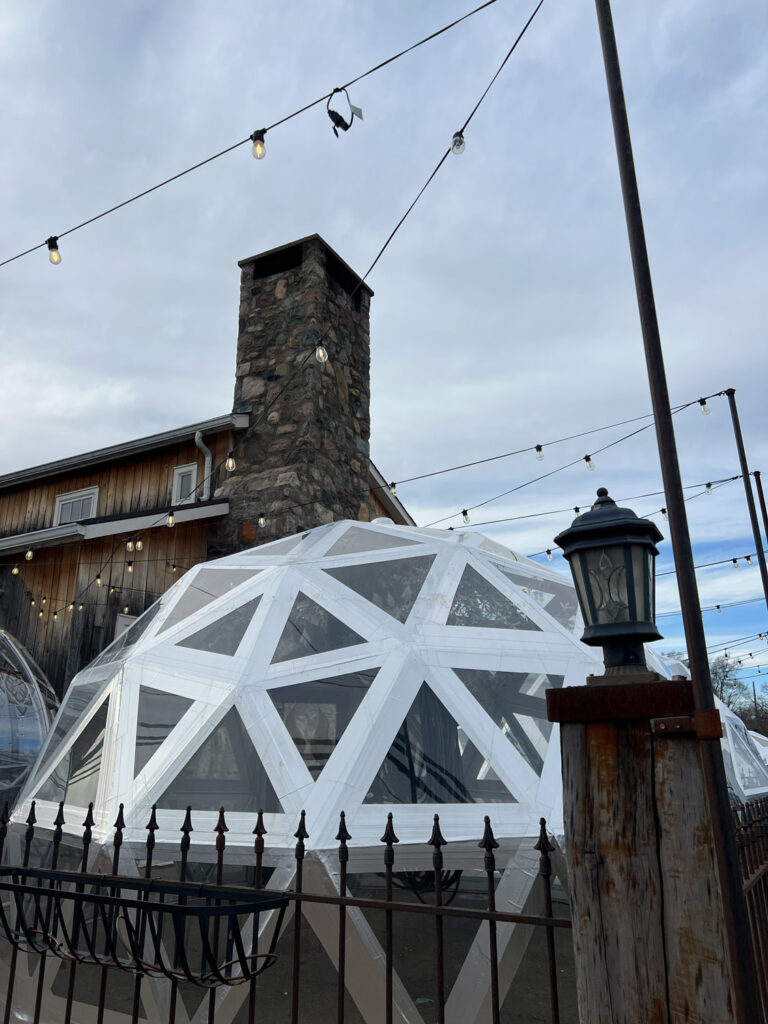
This is no stage set. The current owners obviously respect the history but have added contemporary touches for comfort. We grab a seat at the long bar inside made of striking packed wood pieces. When I ask, the bartender informs us that all the wood is old and repurposed—salvaged from a barn nearby and over a century old.
My husband and I both order the Inn’s signature drink: a mint julep. It comes with a standard red plastic stirrer straw—a missed opportunity given that paper straws were invented to drink mint juleps.
The oversized Chesterfield couch and horse blankets, wing chairs, and brasses glinting in the fire enhance the Saturday night mood as much as the bourbon. People gather at the bar and nearby tables, talking and laughing and greeting friends.
There is an enormous charcoal cartoon of horses in motion on a blank wall, guarded by red velvet ropes, and the wooden floors are art in their own right—unique and stunning—all reclaimed from historic barns or buildings in town.
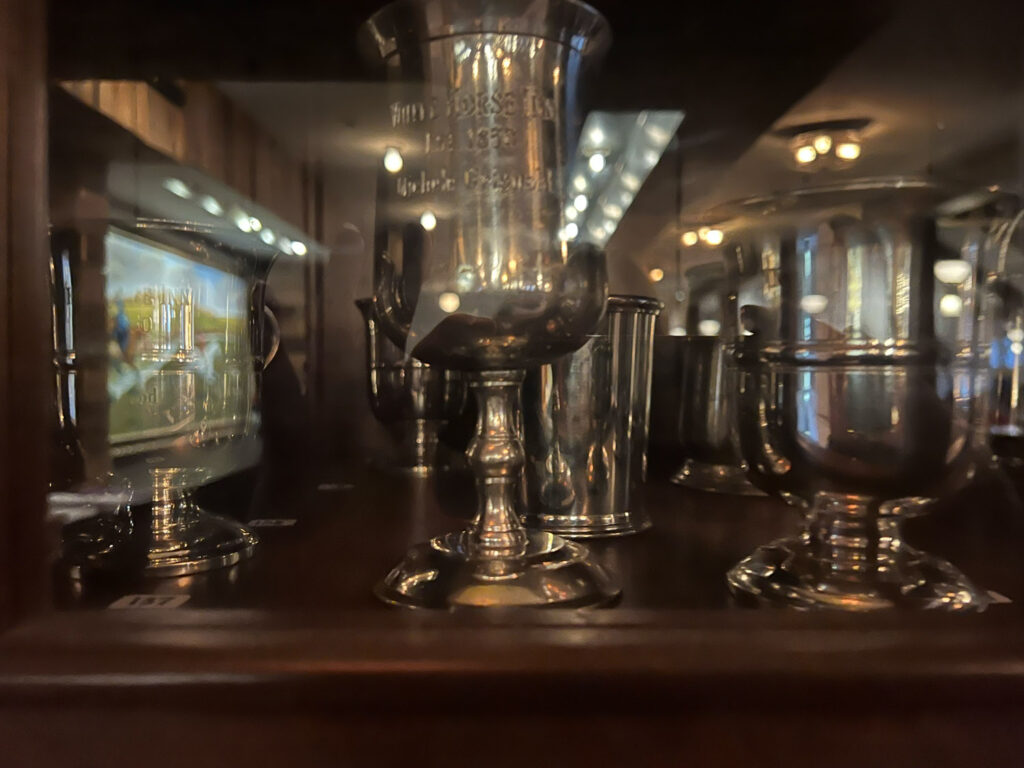
Creep up to the mezzanine, and glance over the railing. Upstairs, at our table, we sit in ebonized fan-back Windsor chairs; they are historically accurate for public social spaces on both sides of the Atlantic in the early nineteenth century and comfortable.
I order the blue cheese-encrusted fillet. Stilton cheese was made famous because of an English coaching inn called the Bell Inn, and it feels appropriate to honor this space with an accurate meal nodding to the past. Beef, ale, and bread pudding fit the bill as comfortably in this century as in previous centuries, and all are excellent.
The good reputations of inns like the one in Metamora gave travelers confidence they would have acceptable food and accommodations during a difficult journey.
Long-established British coaching inns built their reputations on comfort food for passengers traveling far from home and the predictability of their own tables. Then as now, excellence in food and drink was reassuring to those on the road.
Lorenzo Hoard began his career serving railroad passengers as soon as he opened his doors in 1850. The White Horse Inn owed its success to the new technology of the railroad, but the pull toward this small, historic venue now lies in its tradition.
There are not many places outside of Greenfield Village where historical spaces and food recreate an atmosphere as distinctive and inviting as this building. This historic inn—like the town of Metamora itself—is appealing because of its purposeful embrace of the old over the new.
Modernity has crept in, but the focus of White Horse Inn is honoring the past.
Joelle Del Rose is a contributing writer for Michigan Enjoyer.
